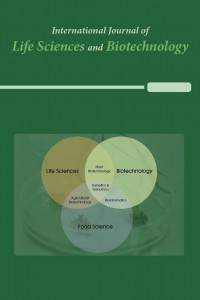Production and Quality Evaluation of Wine from Jackfruit Co-Products
Production and Quality Evaluation of Wine from Jackfruit Co-Products
Jackfruit wine, sensory evaluation, physicochemical properties,
___
- Borines, L. M., Palermo, V. G., Guadalquiver, G. A., Dwyer, C., Drenth, A., Daniel, R., & Guest, D. I. (2013). Jackfruit decline caused by Phytophthora palmivora (Butler). Australasian Plant Pathology, 43(2), 123–129. doi:10.1007/s13313-013-0241-z
- Prakash, O., Kumar, R., Mishra, A., & Gupta, R. (2009). Artocarpus heterophyllus (Jackfruit): An Overview. Phcog Rev. Vol, 3, Issue 6, 353-358
- Morton, J. 1987. Jackfruit. In: Fruits of warm climates. Edited by Julia F. Morton, Miami, FL.
- Department of Agriculture (2010). Jackfruit: A Commodity Profile. Tacloban City, Philippines: Agribusiness and Marketing Assistance Division, Department of Agriculture.
- Mortensen, E. L., Jensen, H. H., Sanders, S. A., Reinisch, J. M. (2001). Better psychological functioning and higher social status may largely explain the apparent health benefits of wine: a study of wine and beer drinking in young Danish adults. Arch Intern Med 161: 1844-1848
- De Faria, A. F., de Rosso, V. V., & Mercadante, A. Z. (2009). Carotenoid Composition of Jackfruit (Artocarpus heterophyllus), Determined by HPLC-PDA-MS/MS. Plant Foods for Human Nutrition, 64(2), 108–115. doi:10.1007/s11130-009-0111-6
- Ball, D. W. (2006). Concentration Scales for Sugar Solutions. Journal of Chemical Education, 83(10), 1489. doi:10.1021/ed083p1489
- Moreno-Arribas, M. V. M. & Polo, M. C. (2008). Wine Chemistry and Biochemistry. Springer Science and Business Media.
- Kumoro, A. C., Rianasari D., Pinandita, A. P. P., Retnowati, D. S., Budiyati, C. S. (2012). Preparation of Wine from Jackfruit (Artocarpus heterophyllus lam) Juice Using Baker yeast: Effect of Yeast and Initial Sugar Concentrations. World Applied Sciences Journal 16: 1262-1268.
- Nielsen, S. (2003). Food Analysis. Springer Science and Business Media.
- Amerine, M. A. and C. S. Ough. (1980). Methods for analysis of musts and wines. John Wiley and Sons, New York. Bhavya H. T. (2009). Transformation of polyphenols in fruits during fermentation: Wine from passion fruit (Passiflora edulis). CFTRI, Mysore, India.
- Yayın Aralığı: Yılda 3 Sayı
- Başlangıç: 2018
- Yayıncı: International Society of Academicians
Molecular Detection of Bacillus cereus in Milk by Polymerase Chain Reaction
Begüm TERZİ AKSOY, Elif BOZKURT, Özlem ATEŞ SÖNMEZOĞLU
Bitki Hastalık Dayanıklılık Proteinleri; İmmün Savunma Molekülleri Olarak R-gen Ürünleri
Mesoporous silica nanoparticles, methods of preparation and use of bone tissue engineering
SARS-CoV-2’nin Hızlı Tespiti İçin Tasarlanan Biyosensörler
Tuğba Begüm KARAKAŞ, İlayda DEMİRDİŞ
Karbohidrat Bazlı Terapotikler
Nebiye Pelin TÜRKER, Elvan BAKAR
Ünlü Kazak Bilim Adamı Çokan Valihanov’a Göre Kazaklarda Tarım Faaliyetleri
Merve SÖNMEZ, Ferah CÖMERT ÖNDER, Esra TOKAY, Ayhan CELIK, Feray KÖÇKAR, Mehmet AY
Biyoteknolojide Biyosensör ve Biyoçip Uygulamaları
Mohammed CHEURFA, Abdalbasit MARIOD, Kaddour YAHYA, Benmbarek İSLAM
